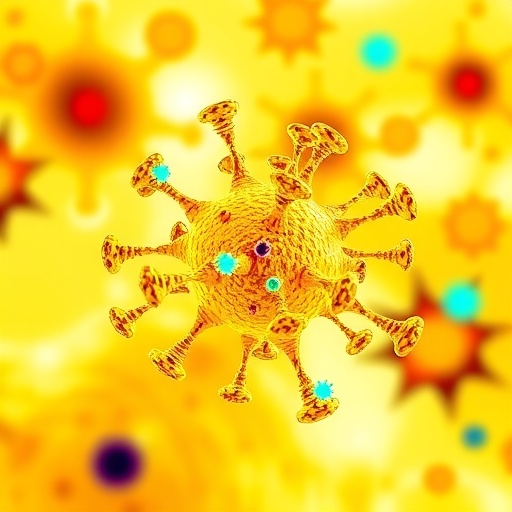PITTSBURGH–New research from Carnegie Mellon University's College of Engineering and the University of Pittsburgh reveals that motor cortical neurons optimally adjust how they encode movements in a task-specific manner. The findings enhance our understanding of how the brain controls movement and have the potential to improve the performance and reliability of brain-machine interfaces, or neural prosthetics, that assist paralyzed patients and amputees.
"Our brain has an amazing ability to optimize its own information processing by changing how individual neurons represent the world. If we can understand this process as it applies to movements, we can design more precise neural prostheses," says Steven Chase, assistant professor in the Department of Biomedical Engineering and the Center for Neural Basis of Cognition. "We can one day, for example, design robotic arms that more accurately implement a patient's intended movement because we now better understand how our brain adjusts on a moment-by-moment basis when we are in motion."
The study explored the change in brain activity during simple motor tasks performed through virtual reality in both 2-D and 3-D. The researchers wanted to know if the motor cortical neurons would automatically adjust their sensitivity to direction when presented with a wide range of possible directions instead of a narrow one. Previous research in the field has suggested that this phenomenon, called dynamic range adaptation, is known to occur in neurons sensitive to sound, touch, and light–prompting the researchers to ask if the same phenomena would apply to neurons in the motor system that are associated with movement.
"When you walk out into the bright summer sun, you squint, and the neurons in your retina use dynamic range adaptation to automatically increase their sensitivity so that you can clearly see until the clouds pass over again," explains Robert Rasmussen, MD/Ph.D. student at the University of Pittsburgh School of Medicine and first author of the study. "This feature allows the brain to better encode information by using its limited resources efficiently. We wanted to find out if our brain encodes movement in the same way."
The results revealed that dynamic range adaptation did indeed occur in the motor cortical neurons. Based on these findings, the researchers concluded that this feature is widespread throughout the brain.
"We found that dynamic range adaptation isn't restricted to sensory areas of the brain. Instead, it is a ubiquitous encoding feature of the cortex," explains Andrew Schwartz, distinguished professor of neurobiology and chair in systems neuroscience at the University of Pittsburgh School of Medicine, and a member of the University of Pittsburgh Brain Institute. "Our findings show that it is a feature of information processing, which your brain uses to efficiently process whatever information it is given–whether that is light, sound, touch, or movement. This is an exciting result that will motivate further research into motor learning and future clinical applications."
###
The study was published in the April 18 issue of the journal eLife. Research funding was provided by the National Science Foundation, the PA Department of Health Research, the U.S. National Institutes of Health, and the Defense Advanced Research Project Agency (DARPA). The research team included Rasmussen, Schwartz, and Chase. For more information, please read the full article: http://dx.doi.org/10.7554/eLife.21409
About the College of Engineering: The College of Engineering at Carnegie Mellon University is a top-ranked engineering college that is known for our intentional focus on cross-disciplinary collaboration in research. The College is well-known for working on problems of both scientific and practical importance. Our acclaimed faculty have a focus on innovation management and engineering to yield transformative results that will drive the intellectual and economic vitality of our community, nation and world.
The College offers graduate and undergraduate degree programs in biomedical engineering, chemical engineering, civil and environmental engineering, electrical and computer engineering, engineering and public policy, information networking, materials science and engineering and mechanical engineering. Our "maker" culture is ingrained in all that we do, leading to novel approaches and transformative results.
About the University of Pittsburgh School of Medicine: As one of the nation's leading academic centers for biomedical research, the University of Pittsburgh School of Medicine integrates advanced technology with basic science across a broad range of disciplines in a continuous quest to harness the power of new knowledge and improve the human condition. Driven mainly by the School of Medicine and its affiliates, Pitt has ranked among the top 10 recipients of funding from the National Institutes of Health since 1998. In rankings recently released by the National Science Foundation, Pitt ranked fifth among all American universities in total federal science and engineering research and development support.
Likewise, the School of Medicine is equally committed to advancing the quality and strength of its medical and graduate education programs, for which it is recognized as an innovative leader, and to training highly skilled, compassionate clinicians and creative scientists well-equipped to engage in world-class research. The School of Medicine is the academic partner of UPMC, which has collaborated with the University to raise the standard of medical excellence in Pittsburgh and to position health care as a driving force behind the region's economy. For more information about the School of Medicine, see http://www.medschool.pitt.edu.
https://engineering.cmu.edu/
http://www.pitt.edu/
https://www.bme.cmu.edu/
http://www.cnbc.cmu.edu/
http://www.medschool.pitt.edu/
http://www.braininstitute.pitt.edu/
Media Contact
Hannah Diorio-Toth
[email protected]
412-268-1208
Arvind Suresh
[email protected]
412-509-8207
@CMUEngineering
http://engineering.cmu.edu
############
Story Source: Materials provided by Scienmag




